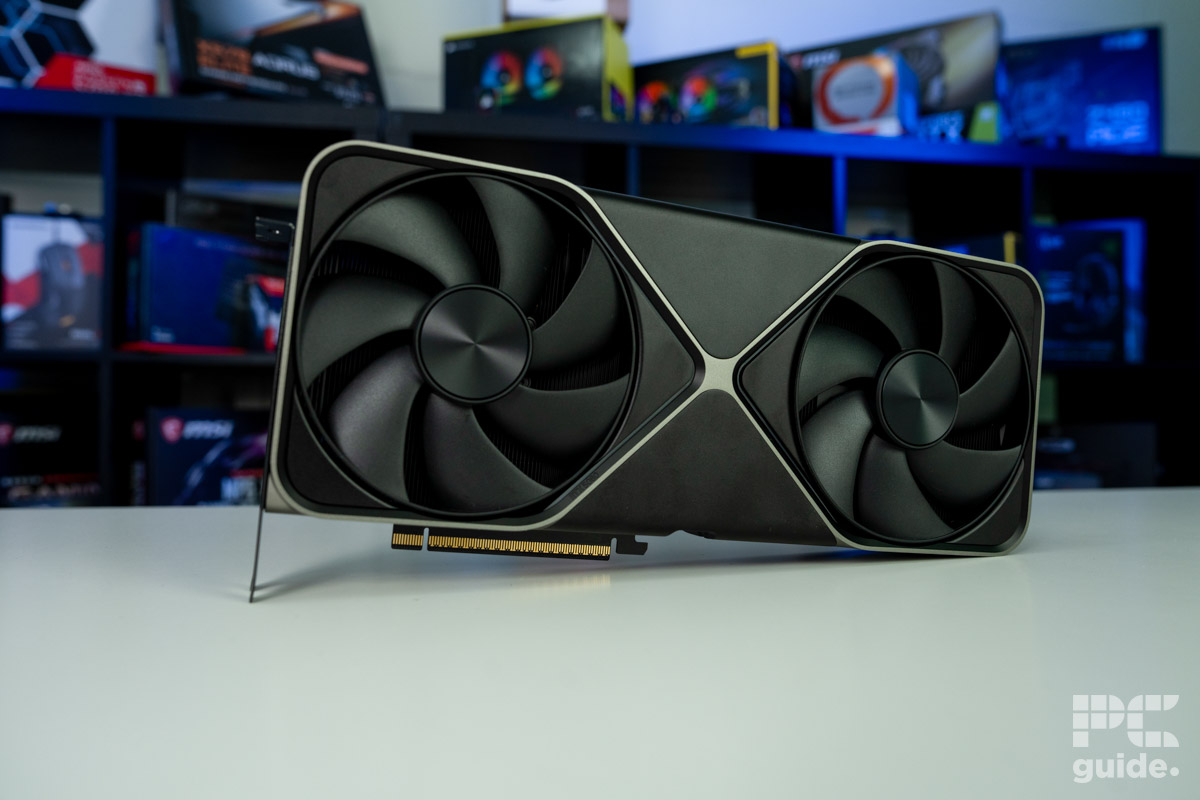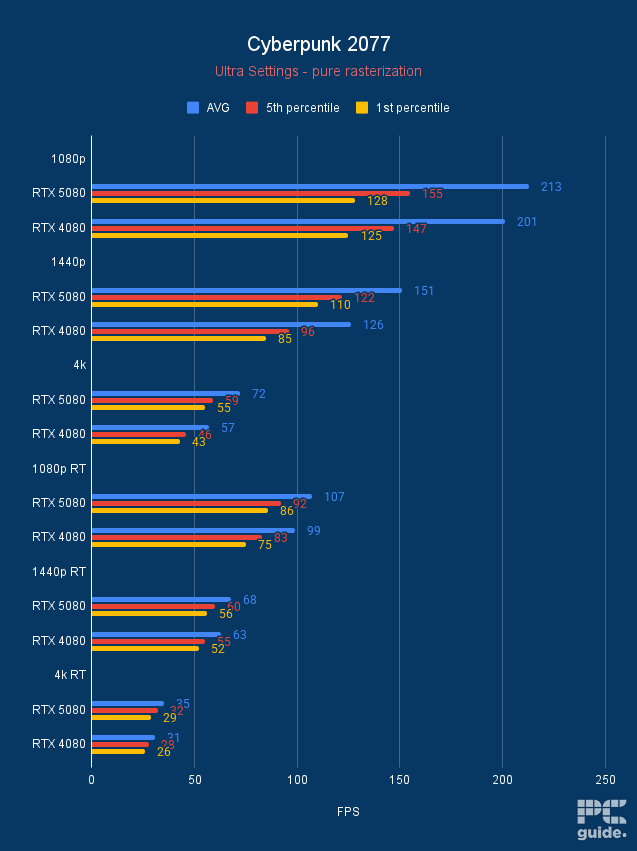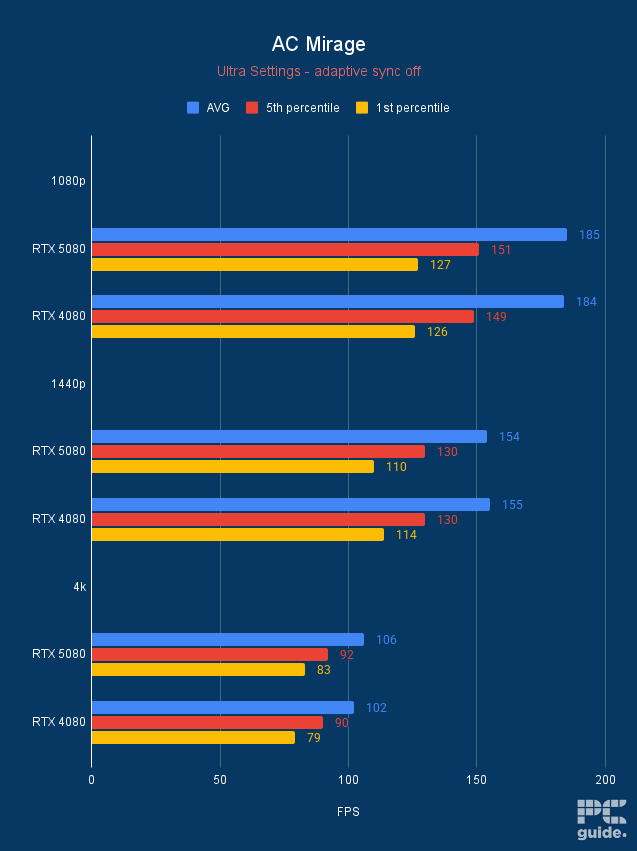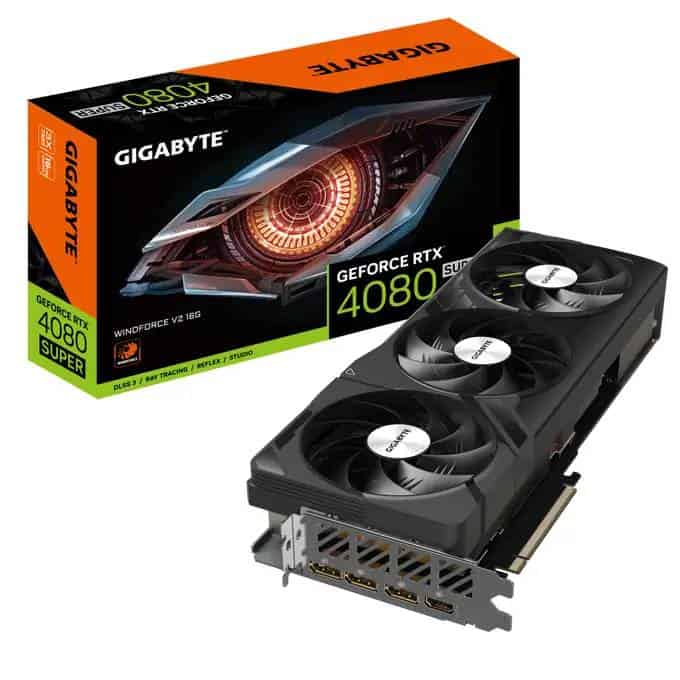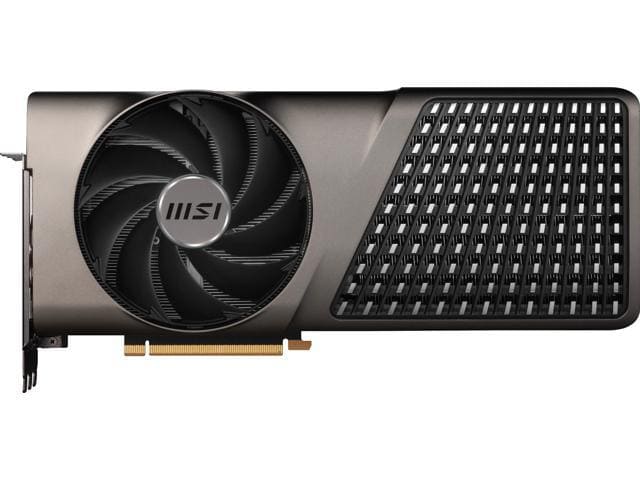RTX 5080 vs RTX 4080 Super specs and performance comparison – which one should you get?
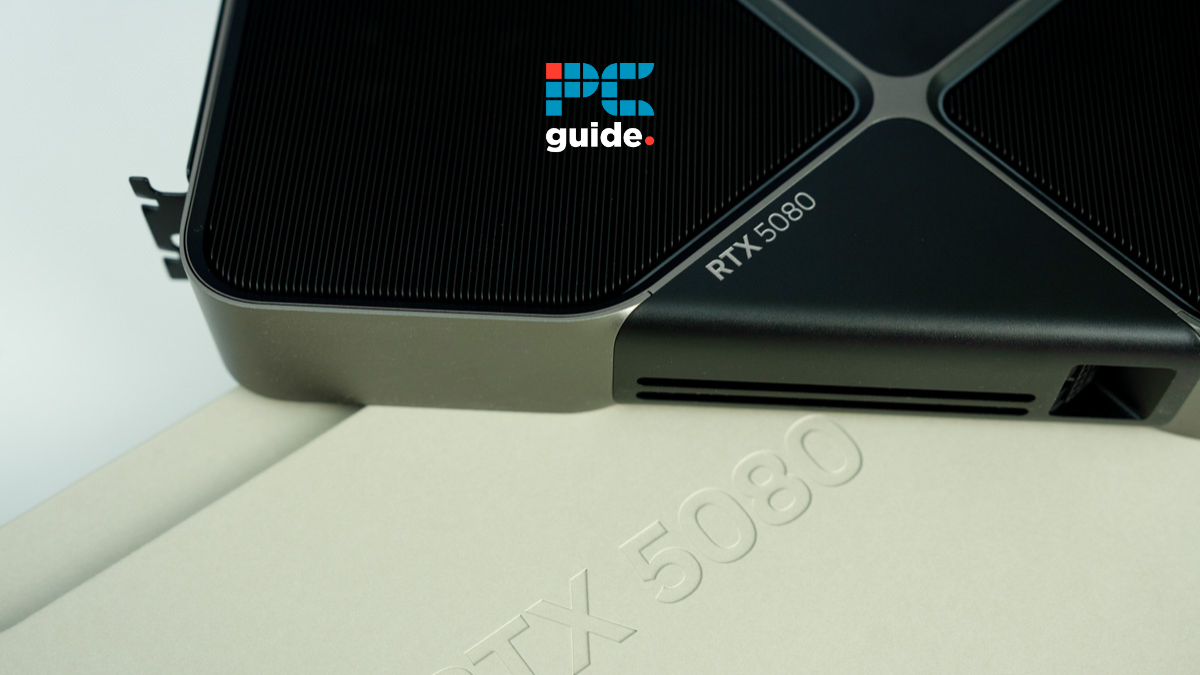
Table of Contents
The RTX 5080 is out, but as expected, it’s tough to get a hold of. We’ve reviewed two RTX 5080s here at PC Guide – the Founders Edition and the ROG Astral GeForce RTX 5080 OC. Both performed very well, scoring 4.5 stars and 4 stars, respectively – however, unsurprisingly, the ASUS option took the lead in performance, albeit for a pretty fair whack of extra cash.
One of the closest comparisons for the 5080, aside from the 5090, is the RTX 4080 Super. It’s a seriously impressive card that scored 4.5 stars in our review, and delivered the goods with both 4K and 1440p gaming.
If you’re here, you’re either looking for a brand new card in general and weighing up between the 5080 and 4080 Super, or you already have a 4080 Super and want to know if it’s worth upgrading to the 5080. In any case, we’ve got everything you need to make the right call here.
Word to the wise, stock issues with the 5080 are pretty intense at the time of writing, and grabbing one at MSRP is difficult, to say the least. If you’re desperate for the card, I’d advise checking out some of the RTX 5080 prebuilt options instead. You may have to pay a premium, but most of them come with powerful CPUs like the Ryzen 7 7800X3D or Intel Core 9 285K. Something to consider…
RTX 5080 vs RTX 4080 Super specs comparison
| Specifications | RTX 5080 | RTX 4080 Super |
| Cores | 10752 | 10240 |
| Base clock speed | 2.30 GHz | 2.29 GHz |
| Boost clock speed | 2.62 GHz | 2.55 GHz |
| Memory | 16 GB GDDR7 | 16 GB GDDR6X |
| Memory interface | 256-bit | 256-bit |
| Memory clock | 30 Gbps | 23 Gbps |
| Bandwidth | 960.0 GB/s | 736.3 GB/s |
| TDP | 360W | 320W |
| Power connector | 12V-2×6 | 12V-2×6 |
| Measurements | 304 mm x 137 mm x 40 mm | 310 mm x 140 mm x 61 mm |
| Release date | Jan 2025 | Oct 2022 |
As both GPUs are high-end models in their respective lineups, the specifications are impressive. However, being a newer card, the 5080 offers slightly better specifications and a higher TDP. If you’re already using the RTX 4080 Super, you should be fine with your current PSU. But if you don’t, Nvidia recommends using at least an 850W PSU with it.
Memory
First, let’s talk about the VRAM. The RTX 5080 has the same amount of VRAM as the 4080 Super: 16GB. The only difference is that the 5080 offers a better and faster memory type – GDDR7. This is a bit disappointing since many Nvidia fans were hoping to see VRAM upgrades in the RTX 50-series lineup, especially since competitors, such as AMD, have introduced 16GB in their mid-range cards – the 9070 and 9070 XT.
Sure, thanks to the better memory type, the 16GB VRAM on the 5080 will help it deliver better performance than the 4080 Super. However, a high-end card should at least have 20GB of VRAM these days. This is because video games are getting more demanding and now require more VRAM for smooth performance, especially at 4K.
Cores
The RTX 5080 offers 10,752 CUDA cores, something that you’d already expect from a high-end GPU. On the other hand, the 4080 Super comes packed with 10,240 CUDA cores. For those who don’t know, the more CUDA cores a GPU has, the more tasks it can handle at the same time.
With the RTX 5080 offering 510 more CUDA cores, it will deliver better performance in tasks compared to the 4080 Super. The difference in core count isn’t as big as it’s between the 5090 and 4090, which is around 5,376 cores, but it’s still something and should help the card perform better, paired with newer and better architecture.

Clock speeds
Now, let’s get down to the clock speeds. The RTX 5080 has a base clock speed of 2.30 GHz, which can go up to 2.62 GHz. On the other hand, the 4080 Super operates at a base clock speed of 2.29 GHz, but it can reach a maximum speed of 2.55 GHz. So, the 5080 has an almost similar base clock speed but a slightly higher boost clock speed.
A higher clock speed means the 5080 will be able to execute more instructions per second than the 4080 Super, which, again paired with more CUDA cores, faster memory, and new architecture, will help it deliver better performance in games and other applications.
4K gaming performance
Now, let’s get down to the performance. As mentioned earlier, we reviewed the RTX 4080 Super, and to get an idea of how good it is, we tested it in several games.
We first tested the card in Cyberpunk 2077. For those who don’t know, this is one of the most demanding games out there, requiring a high-end GPU for smoother performance at higher resolutions. The RTX 4080 Super at 4K, without DLSS enabled and the graphical settings maxed out, managed 51 FPS. On the other hand, in Assassin’s Creed Mirage and Avatar: Frontiers of Pandora, the FPS in both games stayed around 95 at 4K, which was impressive.
As for the RTX 5080, it managed 72 FPS at 4K pure rasterization. This is a difference of 26 and 21 FPS or an increase of 34%, respectively, at native, which is already great, considering the RTX 5080 has an MSRP of $999, the same as the RTX 4080 Super.
However, when we factor in DLSS 4 and MFG, we got a maximum of 183 FPS at Ray Traced 4K with DLSS set to Performance mode and MFG set to 4x. So, there is no chance for the RTX 4080 Super to bridge this gap at native and upscaled performance.
In Assassin’s Creed Mirage, the RTX 5080 delivered 106 FPS at 4K (a 10% increase), which was close to the RTX 4080, but that could be due to the different test bench we used. The performance difference for this title was also significant, meaning the RTX 5080 is a step above the 4080 Super in every department.
1440p gaming performance
When it comes to 1440p, graphics cards have an easier time rendering the frames, meaning it is less taxing, and the GPU can churn out more frames faster. So, we’ll take the example of the same titles at 1440p and see if the performance increased or decreased.
In Cyberpunk 2077, the RTX 4080 Super managed 125 FPS, while the RTX 5080 delivered 151 FPS. This is an 18% performance difference and much less than the 34% difference at 4K, meaning the 4080 Super lessened the gap in output. In Assassin’s Creed Mirage, it managed 139 FPS while the RTX 5080 maxed out at 154, which is, once again, a 10% difference, the same as 4K.
Synthetic performance
Regarding synthetic performance, we ran a couple of benchmarking software but will use Fire Strike Ultra and Time Spy Extreme as an example, as they showcase a GPU’s ability to render 4K frames. In Fire Strike Ultra, the RTX 5080 managed 21,658 points, while the RTX 4080 Super got 17,005 points (a 24% increase). On the other hand, in Time Spy Extreme, the RTX 5080 delivered 16,069, which is a 16% increment over the 4080 Super’s 13,622 points.
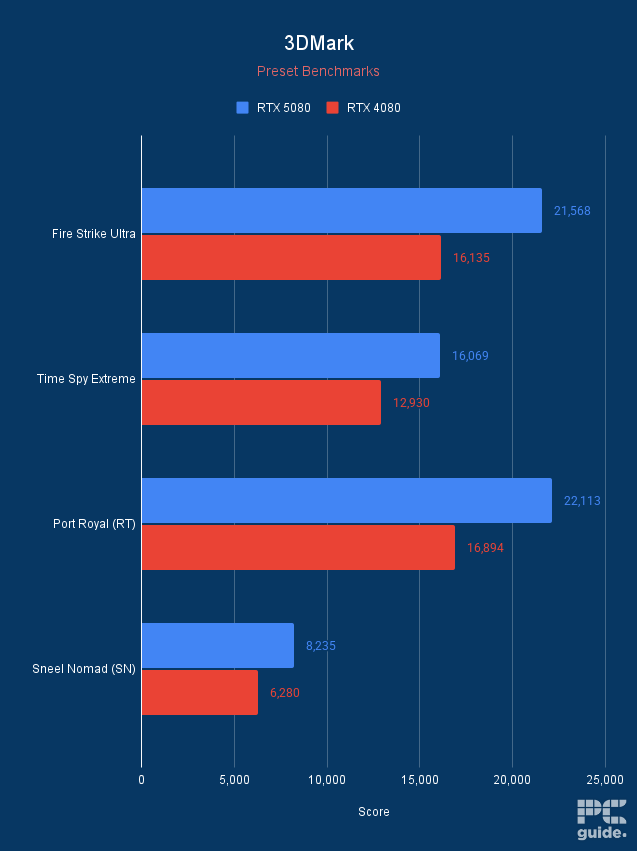
Over on the AI side, we ran Geekbench AI 1.2, which calculates single and half-precision and quantized performance. The RTX 5080 managed 36,534, 60,909, and 27,994 points in all these domains. While we haven’t tested the AI performance of the RTX 4080 Super, we can expect a similar or better performance based on the results of the RTX 4080, which managed 36,122, 52,978, and 28,084 points.
Sizing
Nvidia has always increased the size of its cards with each new generation. For instance, the RTX 4080 and 4080 Super are significantly bigger than their predecessors, the RTX 3080 and 3080 Ti. However, this has now changed with the RTX 50-series lineup, as the new cards are almost similar in size compared to the previous generation.
The RTX 4080 Super measures 310 mm x 140 mm x 61 mm, while the RTX 5080 measures 304 mm x 137 mm x 40 mm (LxWxH). On top of that, while the RTX 4080 Super is a 3-slot card, the RTX 5080 is a 2-slot GPU, meaning it takes less space on the motherboard and will allow you to access other PCIe slots easily due to its thinner design.
Features
Nvidia has an upscaling technology called DLSS, and during CES 2025, the company showcased a more advanced and improved version, DLSS 4. Right now, RTX 40-series users are using DLSS 3.5, but they’ll get access to DLSS 4 once it goes live. However, one important feature of DLSS 4, Multi Frame Generation, will be exclusive to RTX-50 series cards, meaning the 5080 will be able to gain a significant advantage in performance thanks to it.
Nvidia has already shared a video on its YouTube channel, which shows the difference between different DLSS technologies. You can watch it below yourself to see what improvements DLSS 4 will be bringing.
As you can see in the video above, without DLSS, Cyberpunk 2077 delivers only 27 FPS. With DLSS 2, the FPS jumps to 71, which further increases to 142 with DLSS 3.5. However, DLSS 4 delivers the highest performance, with 243 FPS, 101 more than the previous version.
In short, the 5080 has an edge over the 4080 Super in terms of performance thanks to the more advanced version of DLSS. Keep in mind that RTX 40-series users will still be able to use DLSS 4, but they won’t have access to Multi Frame Generation, which is what the fourth version is all about.
During our testing, the RTX 5080 had better performance than the RTX 4080 Super at native but took it to the next level with DLSS 4 and Multi-Frame Generation. For example, it managed 25 FPS at 4K in Cyberpunk 2077, but with DLSS and MFG turned on to Performance and 4X, respectively, the FPS jumped up to 183, which is a 151% performance increase.
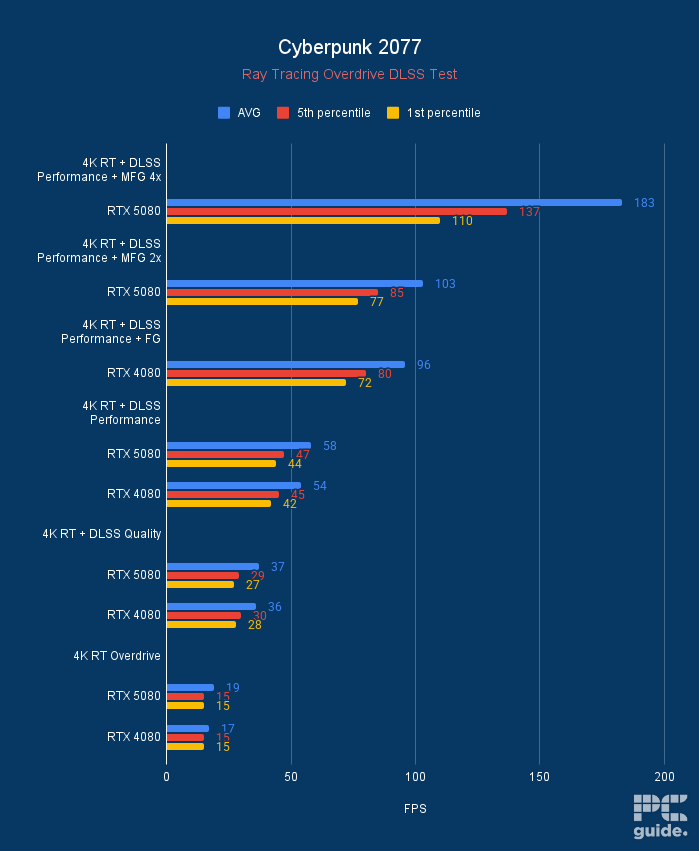
Nvidia also revealed Reflex 2, which is yet another feature that will help the RTX 5080 gain an advantage in terms of performance. This is a much better version of Reflex 1, a technology Nvidia uses to reduce latency in games. For those who don’t know, lower latency translates to a better and smoother gameplay experience, something that is extremely useful, especially for competitive gamers.
In the image below, Nvidia showcases how turning on Reflex 1 brought the latency in The Finals down from 56 ms to 27 ms with Reflex 1, but Reflex 2 reduced it further to just 14 ms. This new version will be paired with Frame Wrap, a feature that will improve the results by using the latest mouse input information. And for those wondering, while the Relfex 2 feature won’t be exclusive to RTX 50-series cards, it will debut on them first, and support for other cards will be introduced sometime in the future.
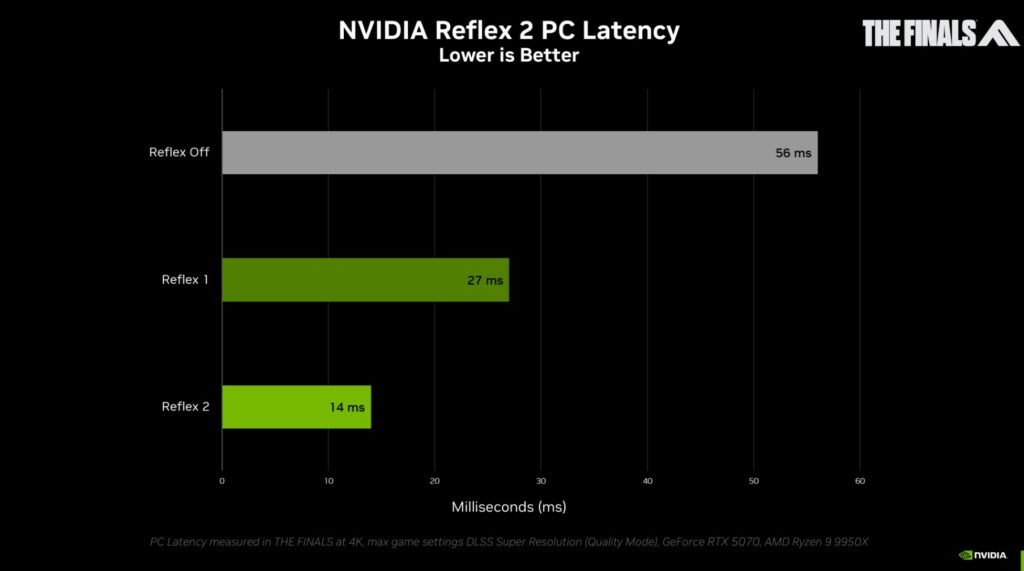
Cooling performance
We’ve reviewed two RTX 5080; one is the Founder’s Edition, and the other is the overclocked variant from ASUS. So, it goes without saying that the OC variant had slightly better performance across the board, but with great power comes a higher thermal output and power draw.
We tested both GPUs by running Furmark 2, which is a stress-testing software, and the results were surprising. The RTX 5080 FE ramped up to pull 360W of power, which is in line with its TDP, and the memory temperatures dropped to 74°C after six minutes. However, the GPU temperature remained slightly under 68°C, which is acceptable for a high-end GPU as they can operate at 70°C+ without any issues.
As for the OC variant, it pulled 400W, which isn’t surprising as the cores are running at a higher frequency, and to our surprise, the GPU memory and overall temperature stabilized at 62°C. The general consensus is that OC AIB cards don’t have the same level of cooling performance, but this time around, the cooling solutions ASUS implemented worked to deliver great performance, keeping the GPU much cooler than the FE variant.
That being said, and this also applies to the RTX 4080 Super, a triple-fan variant will have better cooling performance than a dual-fan variant. Water-cooled GPUs have the best thermal dissipation, putting them in a league of their own, but they cost more and require a custom or pre-built water loop. That being said, the new FE design of the RTX 50-series cards has greatly improved the cooling of the cards and is much better than what the RTX 40-series cards offered.
RTX 5080 vs RTX 4080 Super – price comparison
The RTX 5080 will launch with a price tag of $999. However, this is for the base model only, so we’re expecting third-party variants to enter the market with a $1200 or a slightly higher price tag.
On the other hand, the RTX 4080 Super was also launched for $999, but these days, the card is listed for over $1,000, with some models even priced around $1,500. When the 5080 launches, we can expect the prices to slightly drop.
Final word
The RTX 5080 is a powerful card and delivered on its expectations of much better performance than the RTX 4080 Super due to its better memory type, more CUDA cores, better clock speeds and architecture, and, most importantly, DLSS 4’s Multi Frame Generation feature. The card has price tags of $1,200 to $1,649 (third-party variants), which will be less than what the 4080 Super is being sold at these days.
However, it’s a bit disappointing to see that Nvidia hasn’t introduced any VRAM upgrades in the 5080. Many fans were hoping to see a higher VRAM amount in the high-end models, especially considering competitors are now offering the same amount of VRAM in their mid-range options.
Is an RTX 5080 overkill for 1440p?
The RTX 5080 isn’t overkill for 1440p, but it serves as a great option for 4K as well, so you can switch resolutions if you upgrade your monitor without any issues. It can, as we’ve seen during our testing, churn out high FPS at 1440p, which is great if you’re playing competitive games like Apex Legends or CS2.
However, if you’re playing single-player games like Indiana Jones and the Great Circle or Cyberpunk 2077 with maxed-out settings and Path Tracing turned on even at 1440p, you might find that the RTX 5080 would struggle to deliver high frame rates. That being said, DLSS 4 and Multi-Frame Generation should be able to take care of that and provide a smooth gaming experience.
-
Gigabyte RTX 4080 Super Windforce V2
- GPU: AD103
- CUDA Cores: 10,240
- VRAM: 16GB GDDR6X
- Bandwidth: 736.3 GB/s
- Memory bus width: 256-bit
- Base clock speed: 2295 MHz
-
PNY GeForce RTX 4080 Super 16GB Verto Overclocked
- CUDA Cores: 10,240
- VRAM: 16GB
- Bandwidth: 736.3 GB/s
- Memory bus width: 256-bit
- Base clock speed: 2295 MHz
- Boost clock speed: 2565 MHz
-

